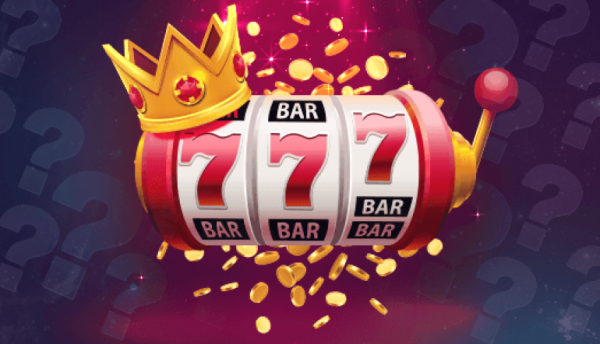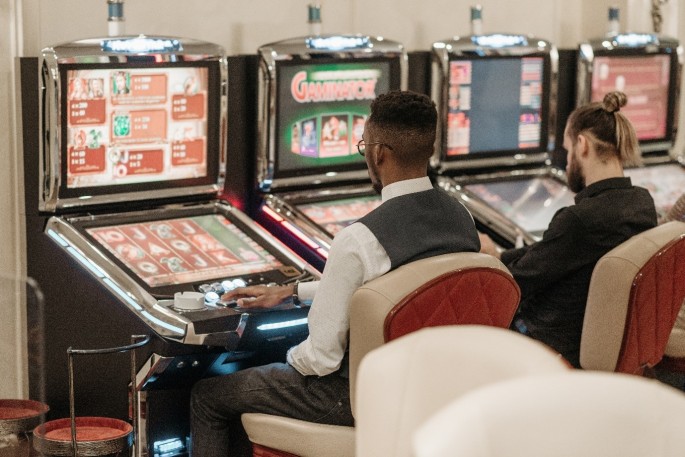First launched in the United States in the 1890s, slot machines have since become firmly established as a mainstream entertainment activity.
Brooklyn firm Sittman and Pitt developed a gambling machine in 1891, but its inability to pay out automatically was a major stumbling block to its success.
We look at the evolution of slot machines since then and how advancements in technology have helped online sites such as winkslots become a global phenomenon.
Liberty Bell lays the foundations
San Francisco mechanic Charles Fey is widely credited with devising the first true slot machine - the Liberty Bell - a few years after Sittman and Pitt's creation.
The Liberty Bell contained three reels with five symbols - horse shoes, diamonds, spades, hearts and bells - and paid out a jackpot of just 50 cents.
It proved to be a huge success, spawning numerous copy-cat machines from other manufacturers over the next 10-15 years.
'Bell' machines became a common sight across the United States, with saloons, cigar stores, bowling alleys, barber shops and brothels amongst the venues where they were installed.
Restrictive gambling laws in some states saw food prizes awarded rather than money, sparking legal cases to determine the machines' status as gambling devices.
Despite this, the slot machine industry showed no signs of slowing down and took another massive leap forward during the early 1960s.
Money Honey ramps things up
Bally's launch of the first fully electromechanical slot machine in 1963 - Money Honey - was undoubtedly a pivotal moment for the industry.
Money Honey was the first slot machine with a bottomless hopper and automatic payout of up to 500 coins without the need to call an attendant.
The popularity of Money Honey in the US and further afield led to electronic games gradually replacing their mechanical counterparts.
Las Vegas-based Fortune Coin Co moved things forward again in 1976, developing the first fully functioning video slot machine.
It was soon approved by the Nevada State Gaming Commission and quickly boomed in popularity on the Las Vegas Strip and in downtown casinos.
The technology was subsequently purchased by International Gaming Technology (IGT) in 1978, a move that helped them become a major player in the industry.
Second screens and the internet
The mid-1990s saw further changes in slot machines, with 'second screen' bonus rounds incorporated into games in Australia and the US for the first time.
When the bonus round was triggered the action moved to a different screen, which is where the bonus game took place and jackpot payouts could be achieved.
These machines were the template used by developers to create increasingly immersive games when online slots finally arrived on the scene.

The launch of the internet revolutionised the slots industry
Online casinos initially featured table games such as blackjack and roulette, but it was not too long before slots were added into the mix.
The format of the games was largely the same as traditional slots, with a base game acting as the forerunner to the lucrative bonus game.
However, with technology continuing to advance at a rapid rate, the leading developers were able to significantly push the boundaries after the turn of the millennium.
Slots become bigger and bolder
The last couple of decades have seen a radical transformation in slots, with the sheer size and scale of the gameplay dwarfing the traditional slots of yesteryear.
Computer programming has removed the limitations of what is possible in slots. More reels? No problem. Different bonus levels? Absolutely. Extra features? Easy. The list is endless.
It is now unusual to see online slots with less than five reels and multiple ways to win, while every game has its own unique theme.
This is generally something from another genre such as superheroes, television shows, movies, horror, mythology, sports and so on.
All of the game symbols are taken from the chosen theme, while each of the features and additional bonus levels are based around the same.
These elements come together to form immersive online slots that have the power to keep players engaged for hours on end.
Online slots in the future
Recent advancements in mobile technology and improved Wi-Fi connectivity have created further evolution in the ways online slots are developed and played.
Increased smartphone usage will see this trend continue apace over the coming years, although this may not be the biggest factor to impact the sector.
Many industry experts have forecast that Virtual Reality (VR) will be the next emerging technology to take slots games into another stratosphere.
Leading software developers Evolution Gaming have already made great strides in this area, successfully launching a live VR casino game last year.
Entitled Gonzo's Treasure Hunt, the game expertly merges elements of slots and game shows to create a hugely exciting entertainment experience.
Players use a VR headset to access stunning 360-degree video content, thus immersing themselves into another world through the power of technology.
Further game releases are anticipated in the future, and VR games are widely tipped to become the norm before the 2020s are complete.
With the current landscape evolving at a much faster rate than during the 20th century, it is exciting to think about where things could end up in another couple of decades.




























